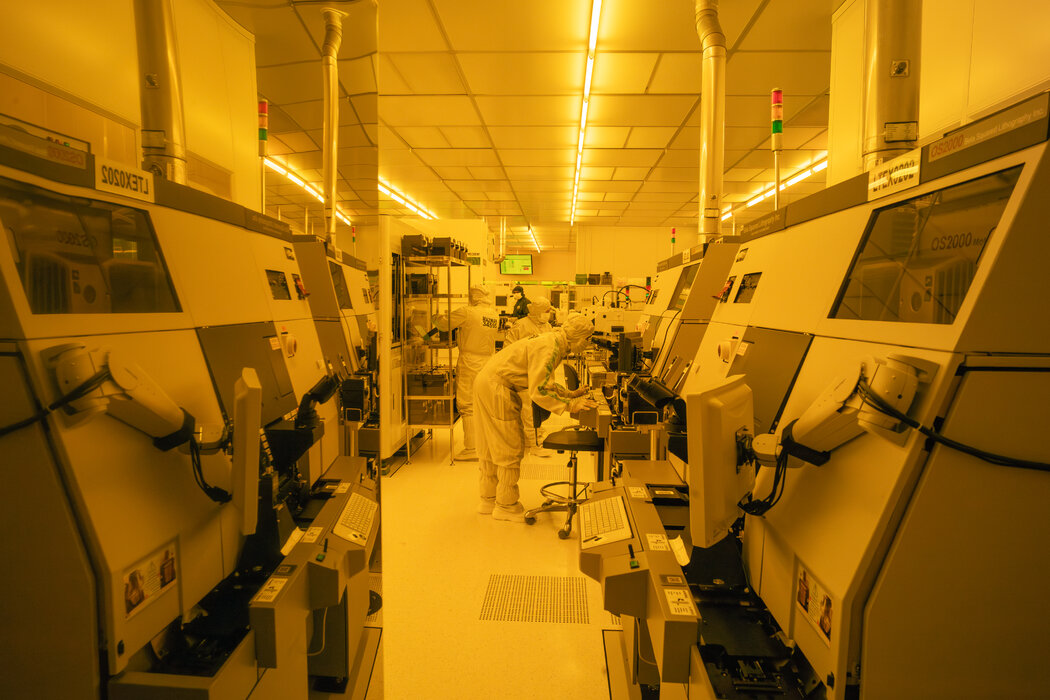In this brand-new industrial park in Kulim, Malaysia, you can still see tower cranes used in construction around it. But inside the factory, a large number of workers recruited by Austrian technology giant AT&S are ready to reach full production by the end of the year.
They are dressed in work clothes from head to toe, wearing large goggles and hard hats, which are reminiscent of the worker bee-like characters in the movie “Minions”. The colors of the clothes represent different functions: blue is maintenance personnel, and green is suppliers. , pink is the cleaner, and white is the operator.
Malaysia Becomes a New Hot Spot for Investment
Recently, a large number of European and American companies have decided to move to Malaysia, the holy land of electronic and electrical manufacturing, or expand their business, and AT&S is just one of them.
American chip giant Intel and Germany’s Infineon have each invested US$7 billion here. Nvidia, the world’s leading artificial intelligence chip maker, is working with a Malaysian utility group to develop an artificial intelligence cloud and supercomputer center for US$4.3 billion. Texas Instruments, Ericsson, Bosch, and Lam Group have also expanded their presence in Malaysia.
The boom reflects the extent to which geopolitical friction and competition are reshaping the global economic landscape and driving billions of dollars in investment decisions. As competition between the U.S. and China intensifies over cutting-edge technologies and trade restrictions intensify, companies – especially in key industries such as semiconductors and electric vehicles – are working to strengthen their supply chains and production capabilities.
Kulim Industrial Park Becomes an Important Strategic Pivot
Before looking for a new production site, AT&S has production sites in Austria, India, South Korea, and China (where its largest production facilities are located).
“It is clear that after 20 years of investing in China, we need to diversify our business,” AT&S CEO Andreas Gerstenmaier said. The company produces high-end printed circuit boards and carrier boards, which are the basis for advanced electronic components that power artificial intelligence and supercomputers.
The company began looking for a site for the new plant in early 2020, just as warnings began to spread about a dangerous new coronavirus emerging in China. AT&S visited 30 countries on three continents before settling on Malaysia.
Southeast Asia’s strategic position in the South China Sea and long-term economic ties with China and the United States make the region an attractive location for building factories. Countries such as Thailand and Vietnam are also aggressively attracting semiconductor companies, offering tax incentives and other benefits.
But Malaysia has the advantage of being one step ahead.
Malaysia has been seizing the opportunities presented by the technology wave since the 1970s when it attracted some of the world’s biggest stars in electrical and electronics, such as Intel and Litronix (now part of Osram, which is headquartered in Austria and Germany) ). It established a free trade zone in Penang, offered tax holidays, and built industrial parks, warehouses, and roads. Cheap labor, a large English-speaking population, and a stable government are additional attractions.
Gerstenmaier said Malaysia’s experience in semiconductor back-end manufacturing was one of the main attractions.
“They understand the needs of the semiconductor industry very well,” he said. “They have a mature ecosystem in terms of universities, education, labor, and supply chains.” He also said that government support is also what attracts them.
Tanku Zafrul Aziz, Malaysia’s Minister of Investment, Trade and Industry, said that starting in 2019, foreign investment began to increase as semiconductors were widely used in everything from automobiles to medical equipment. “There are 5,000 chips on a car,” he said.
Attracting the Attention of Global Technology Giants
Malaysia is already the world’s sixth-largest exporter of semiconductors, and 23% of U.S. chips are produced in Malaysia.
“It’s quite incredible that a country of this size has such an influence on the global semiconductor market,” said David Lacey, head of advanced development and services at Osram. Osram is one of the world’s largest lighting companies.
He sat at a large conference table at Universiti Sains Malaysia in Penang and pointed quickly at the technology equipment in the room. “There’s a TV, there’s lights, there’s a projector, there’s a phone,” he said. “You can guarantee that there is always a bit of Malaysian content in it.”
The gathering of many technology companies also creates a gravitational pull. Penang and Kulim are connected by two winding bridges and are home to more than 300 companies.
“It has everything here,” said Eric Chen, vice president and general manager of Intel Malaysia. After half a century of development, this kind of network and infrastructure has become difficult to replicate.
Eric Chen also mentioned the government’s critical cooperation in keeping factories open during the epidemic.
Foreign direct investment last year was nearly $40 billion, more than double the 2019 total.
“Most of our major investments have occurred in the past two years,” said Mario Lorenz, managing director of German logistics company DHL Supply Chain in Malaysia.
During this period, the semiconductor industry has grown into the company’s main business in Malaysia. “We went with the flow,” he said.



